Botrytis, or gray mold, caused by the fungus, Botrytis cinerea, can cause significant losses in high tunnel and greenhouse tomato production if not controlled properly. The pathogen can rapidly spread during periods when structures are closed and when relative humidity remains high for long periods of time. This often occurs when outside weather remains cool and damp while heating is needed. Gray mold is favored by temperatures from 64° to 75°F and requires only high humidity (not leaf wetness) to become established. The pathogen has a large host range and once established in an enclosed structure it can be very difficult to control (UMASS). The fungus can survive/overwinter as mycelia or sclerotia in plant debris and in organic soil matter (NCSU).
Identifying and controlling Botrytis in high tunnel and greenhouse tomato production
Controlling Anthracnose and Alternaria Leaf Blights in Cucurbit Crops
Anthracnose and Alternaria leaf blight can become problematic in cucurbit crops during long periods of wet, humid weather. Both can cause significant losses if not controlled properly. With the production season in full swing, now is a good time to review a few of these important diseases. [Read more…]
Diagnosing leaf diseases in sweet (and field) corn in the mid-Atlantic region
Dr. Alyssa Koehler, Field Crops Pathologist from the University of Delaware, recently posted a great diagnostic guide for important fungal leaf diseases in corn. Click here for more information. If you want to follow what is going on in Delaware you can sign up for their Weekly Crop Update by clicking here.
Diagnosing important diseases in Cucurbit crops – Reference Guide
The following images consist of important diseases in cucurbit crops. These images can be used as a quick reference for diagnosing important fungal and bacterial pathogens. For best results, please turn your device (i.e., cell phone) sideways. For information on commercial control recommendations, please visit the cucurbit sections of the 2024/2025 Mid-Atlantic Commercial Vegetable Production Guide.
| Cucurbit powdery mildew (CPM) | Cucurbit powdery mildew | CPM on infected pumpkin stem |
 |
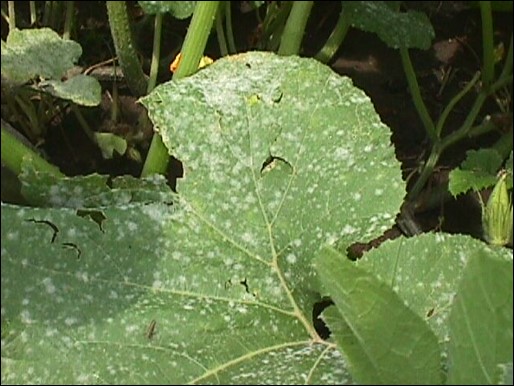 |
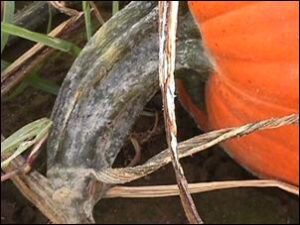 |
| Cucurbit downy mildew (CDM) | CDM sporulating on underside of infected cucumber leaf | CDM sporulating on underside of infected cucumber leaf with 10x hand |
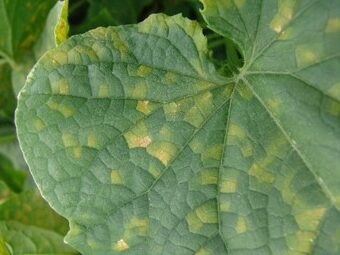 |
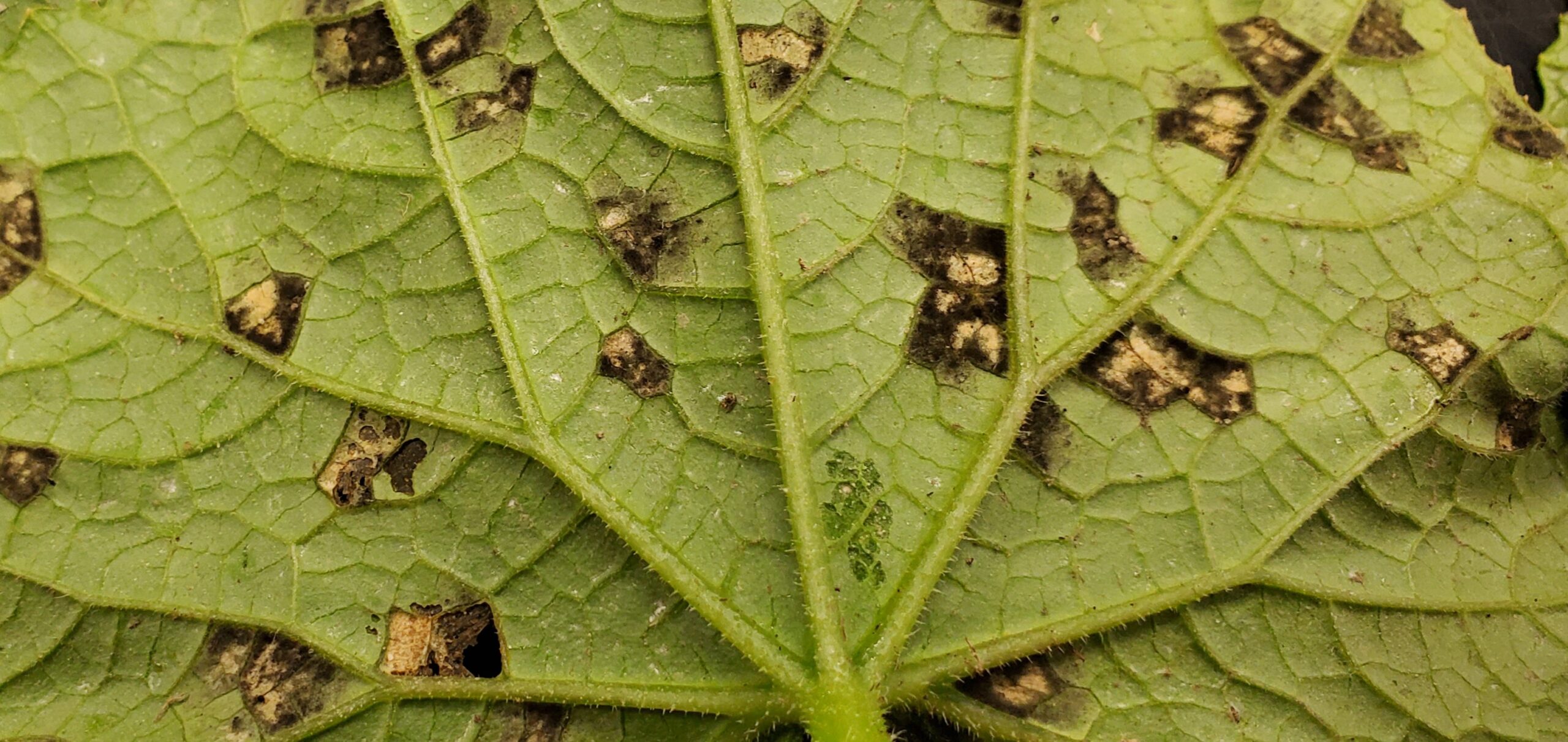 |
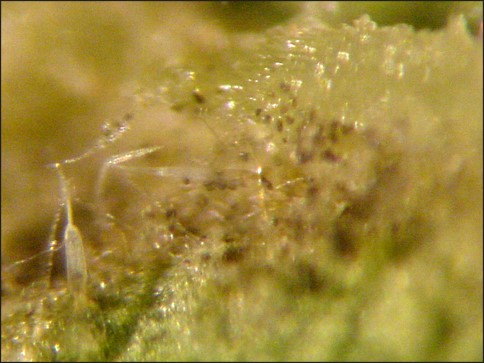 |
| Anthracnose on cucumber | Anthracnose lesion on infected leaf vein | Anthracnose-infected cucumber fruit |
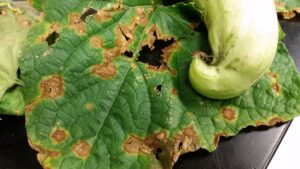 |
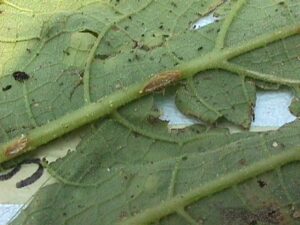 |
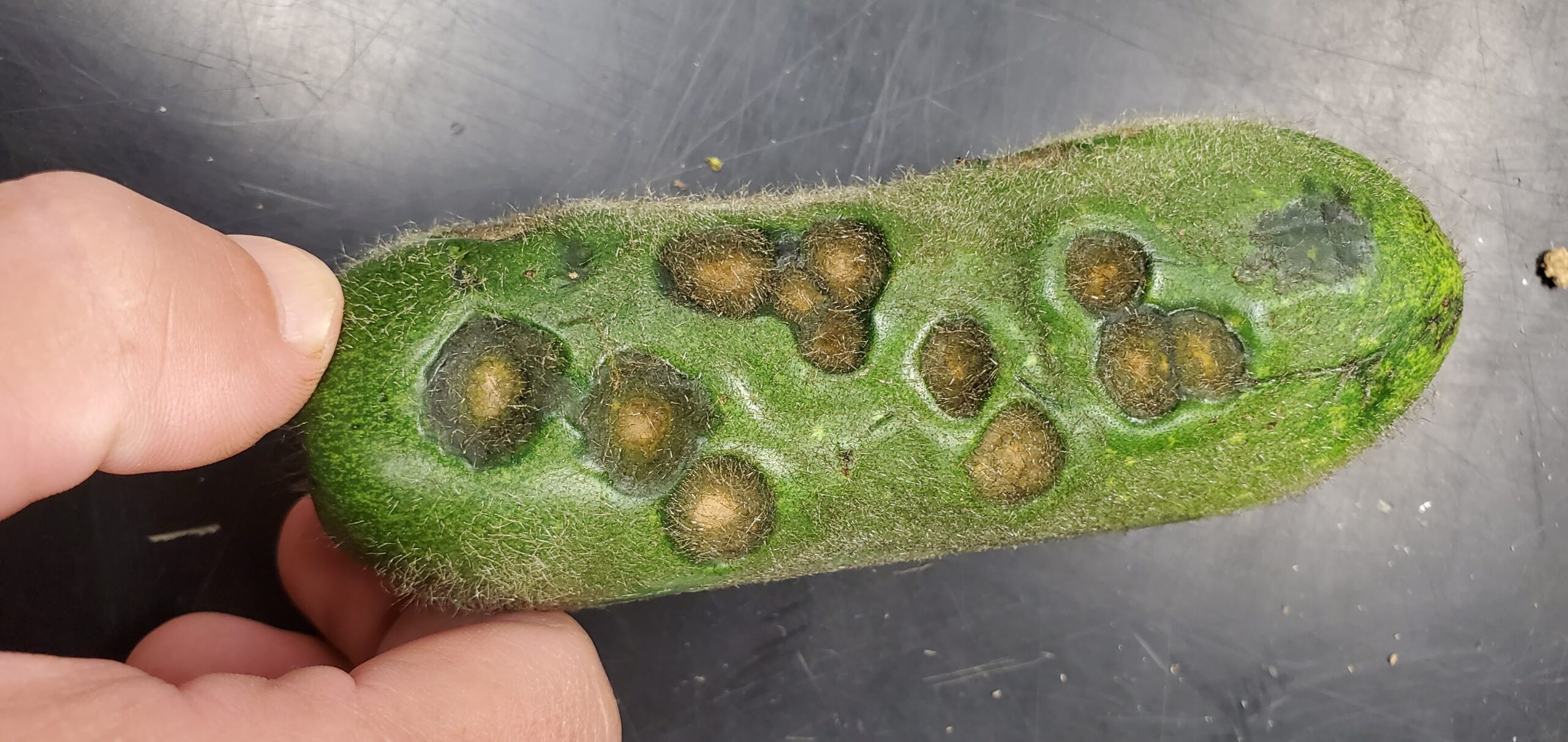 |
| Plectosporium blight on infected stem | Plectosporium lesions on infected vines | Plectosporium lesions on infected pumpkin fruit |
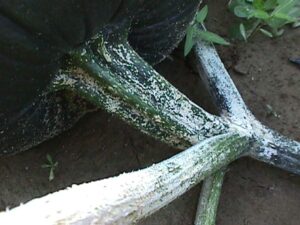 |
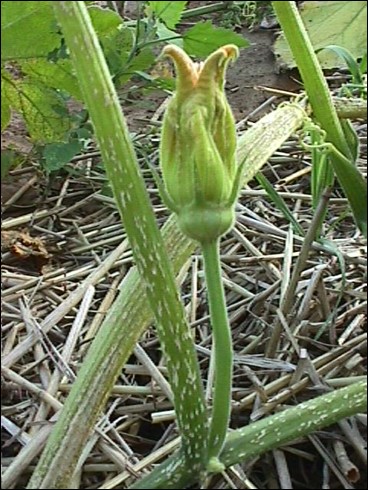 |
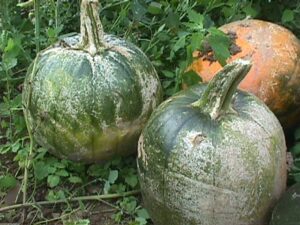 |
| Phytophthora blight symptoms | Phytophthora-infected squash | Phytophthora-infected watermelon field |
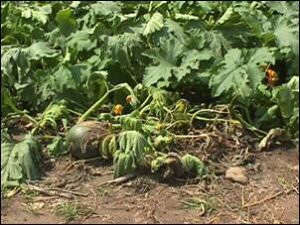 |
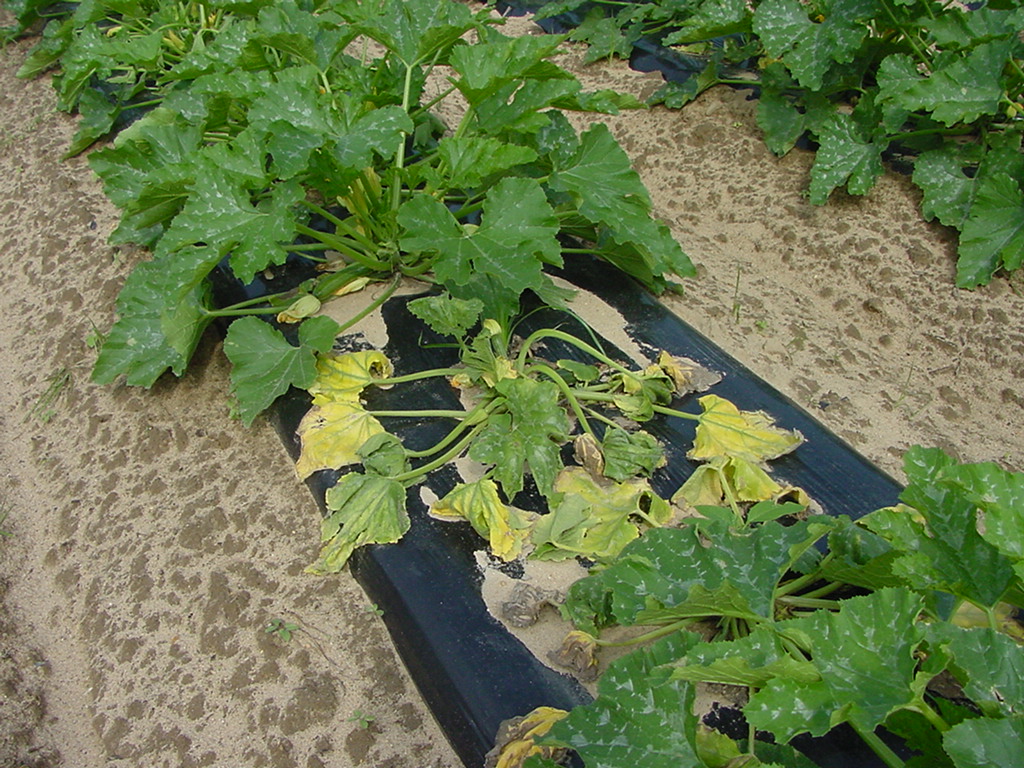 |
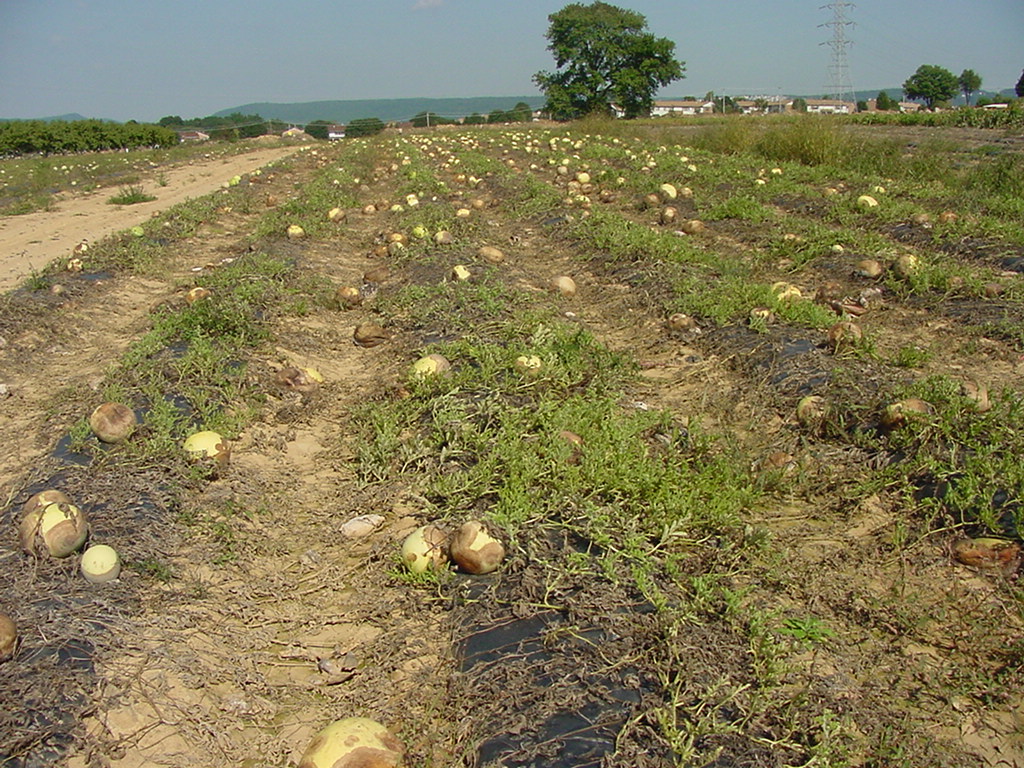 |
| Phytophthora-infected pumpkin | Phytophthora-infected squash fruit | Phytophthora-infected watermelon fruit |
 |
 |
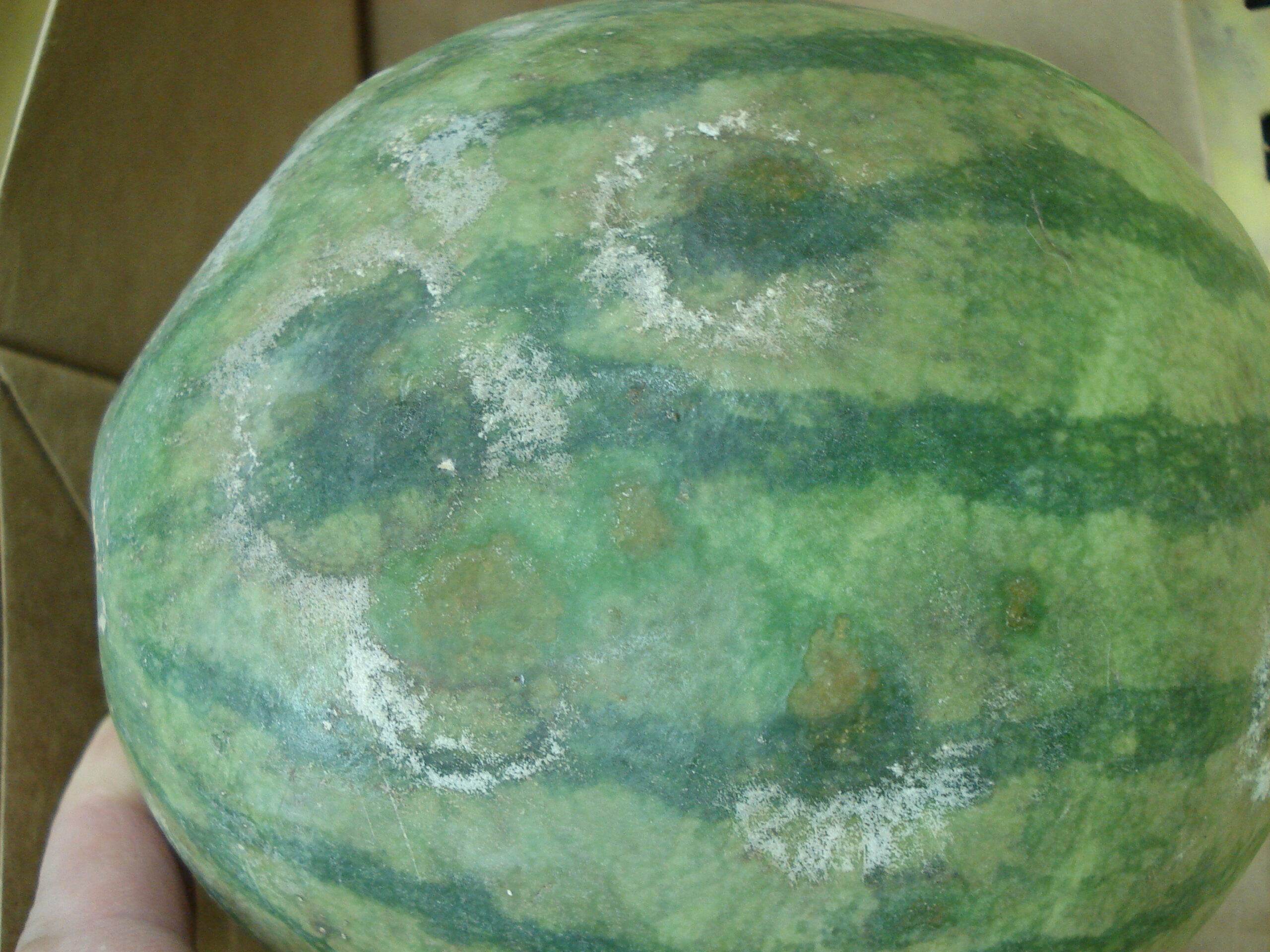 |
| Mosaic virus symptoms on leaves of infected pumpkin plant | Pumpkin fruit infected with mosaic virus | Virus infected squash fruit |
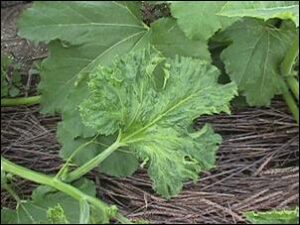 |
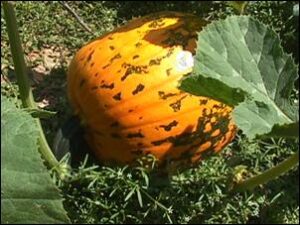 |
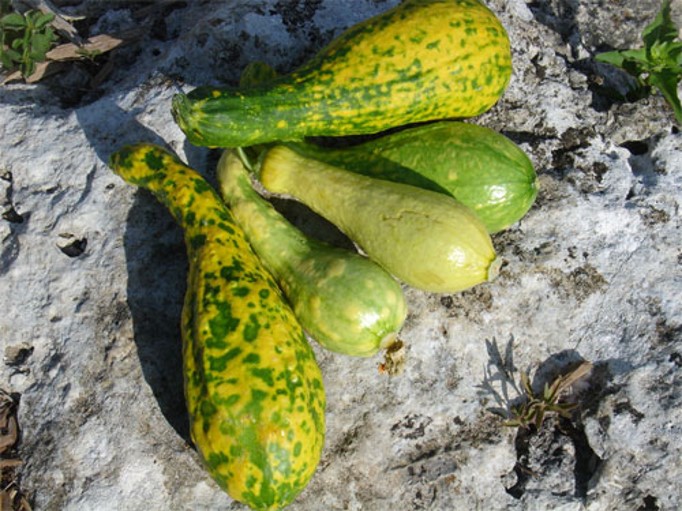 |
| Fusarium fruit rot of pumpkin | White mold on infected fruit | Gummy stem blight |
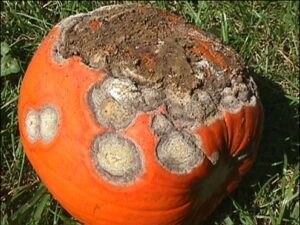 |
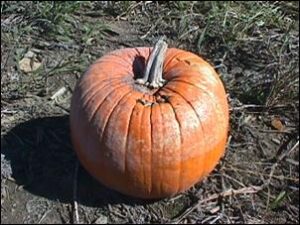 |
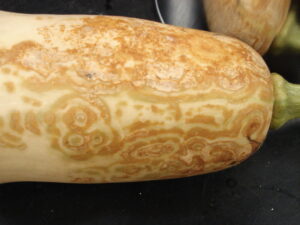 |
| Choanephora-infected fruit | Choanephora spores in infected pumpkin fruit | Choanephora infecting giant pumpkin fruit |
 |
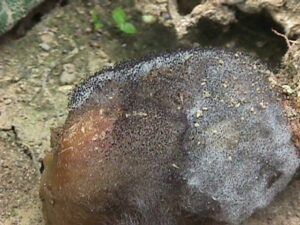 |
 |
| Bacterial wilt infected plant | Symptoms of bacterial canker infected stem | Damage done by cucumber beetle feeding |
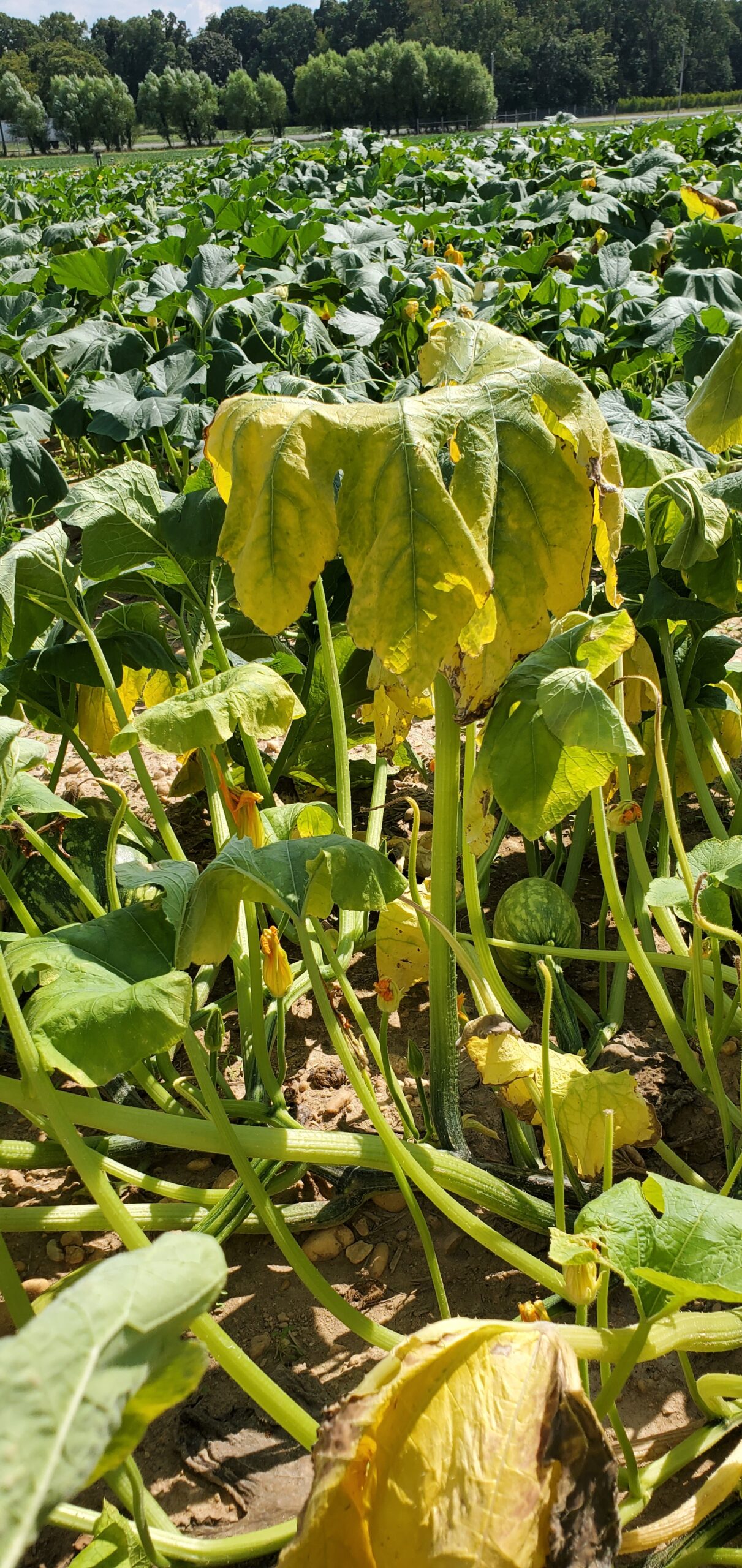 |
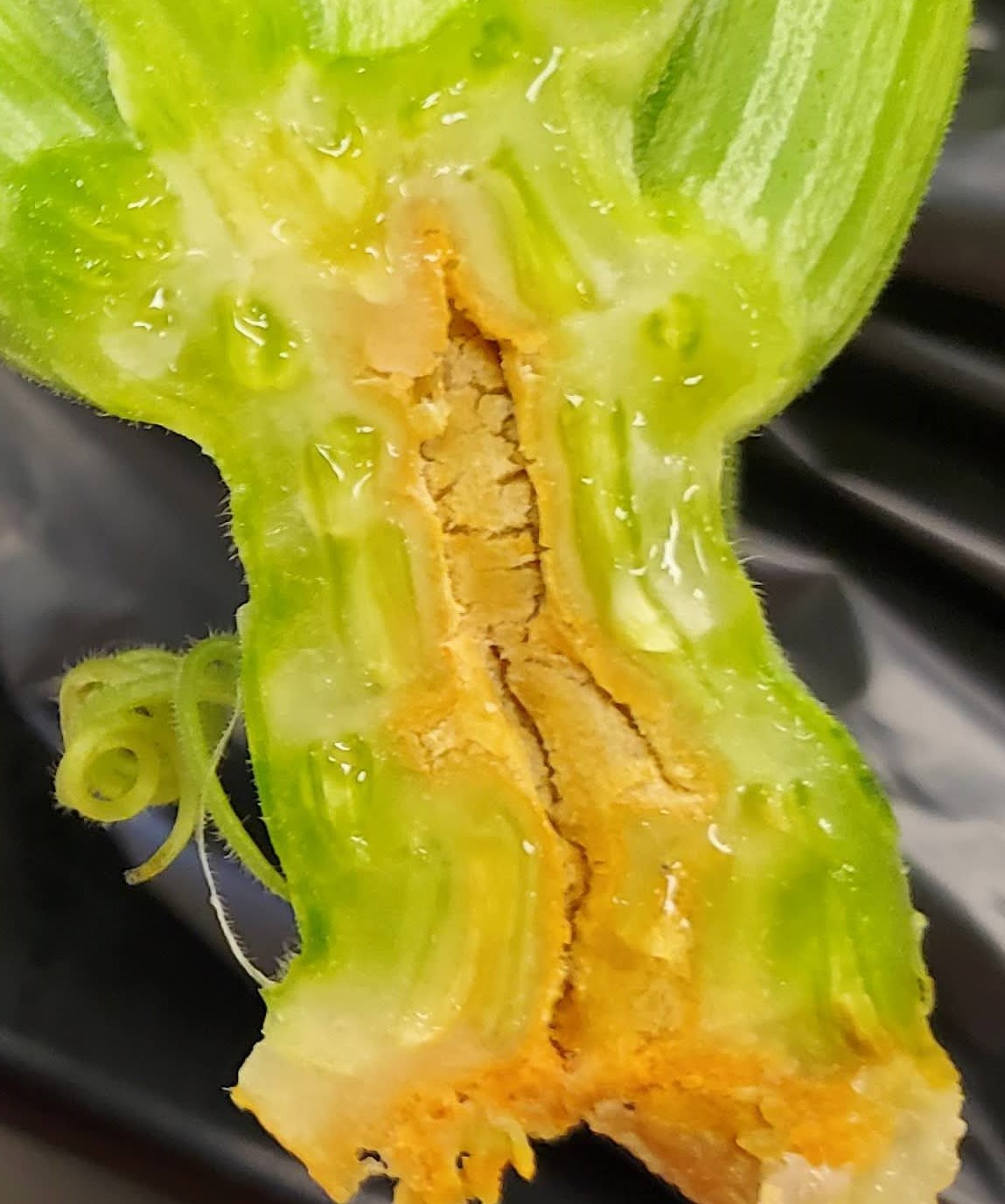 |
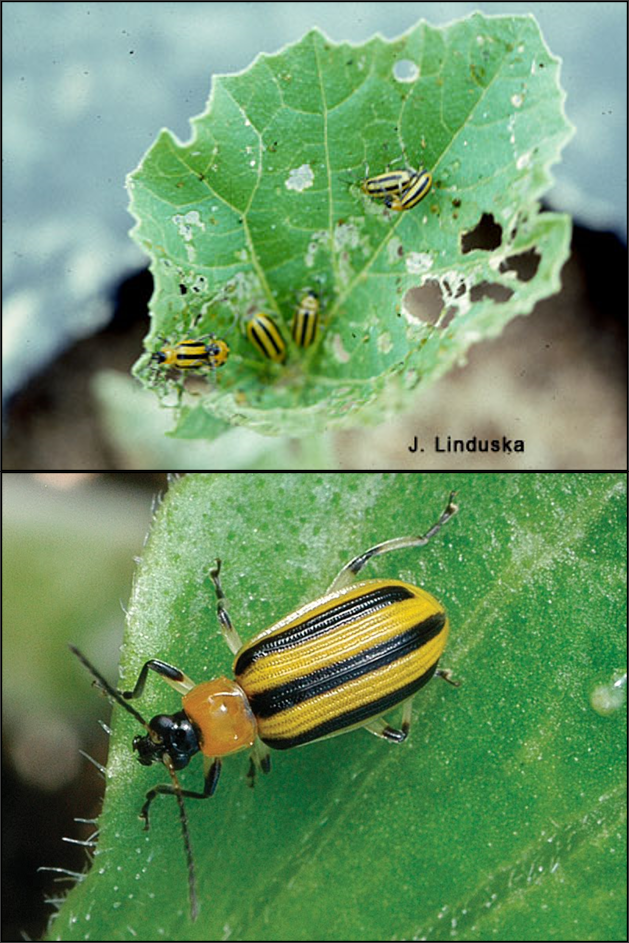 |
| Angular leaf spot | Shot holes in pumpkin leaves caused by Angular leaf spot in pumpkin | Mature pumpkin fruit with sunscald injury due to the loss of plant canopy |
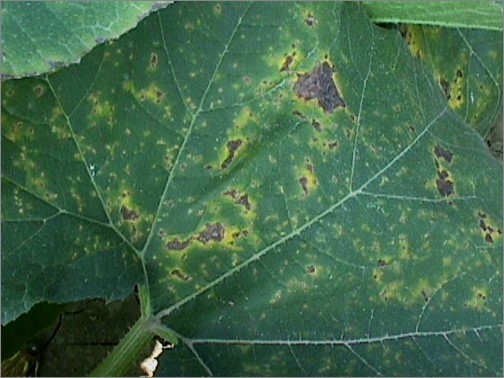 |
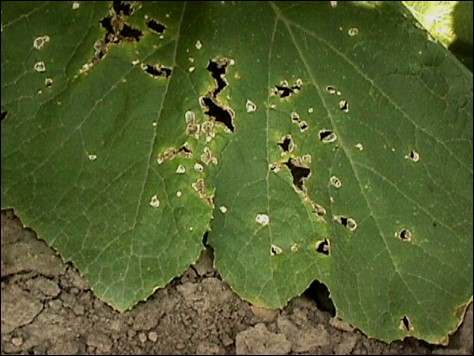 |
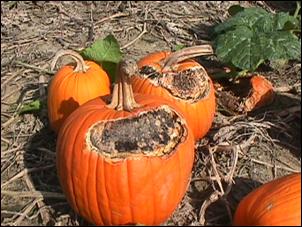 |
Andy Wyenandt and Kris Holmstrom
Diagnosing Southern blight and White mold in tomato and pepper
There have been a few reports of Southern blight (Sclerotinia rolfsii) and White mold (Sclerotinia sclerotiorum) on tomato and pepper in New Jersey. Southern blight is much more common in vegetable areas south of the state where summer temperatures remain hotter (above 90°F) for longer periods of time. Like white mold, it can survive in the soil for many years. Symptoms of Southern blight include infection at the base of the stem at the soil line. The resulting infection will girdle the plant causing wilt and death. The fungus will produce white, cottony mycelium and very small, spherical sclerotia which are often have a tannish, brown color.
White mold is more common than Southern blight in New Jersey, and like Southern blight, once introduced into a field or high tunnel it can very difficult to control. The pathogen produces large black sclerotia on the surface and inside infected stems. If sclerotia of either pathogen make their way back into the soil, both can survive for years causing significant problems.
All infected plants need to be removed immediately and disposed of properly to help reduce the chances of sclerotia returning to the soil.
For more information on chemical control please see the 2024/2025 mid-Atlantic Commercial Vegetable Production Recommendations Guide.
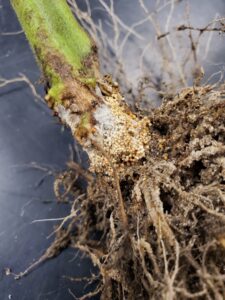
Symptoms of Southern blight on infected pepper plant. Note the numerous, small white to tan colored sclerotia on the stem.
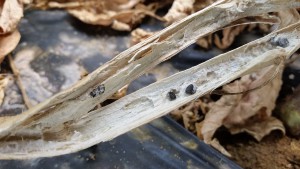
White mold of tomato. Note the large black sclerotia developing inside the brittle stems.
Diagnosing Verticillium Wilt in Eggplant
Verticillium wilt has been reported in eggplant this summer. It is a common soil-borne fungal pathogen that once it has infested soil can remain for a very long time. Verticillium wilt is caused by either Verticillium albo-atrium or Verticillium dahlia and has a wide host range (over 200 plant species). Both pathogens can survive (overwinter) as microsclerotia in the soil. Verticillium wilt prefers cooler weather and drier soils and can be more severe in neutral to alkaline soils. Solanaceous weeds such as Nightshade may harbor the pathogen. [Read more…]
